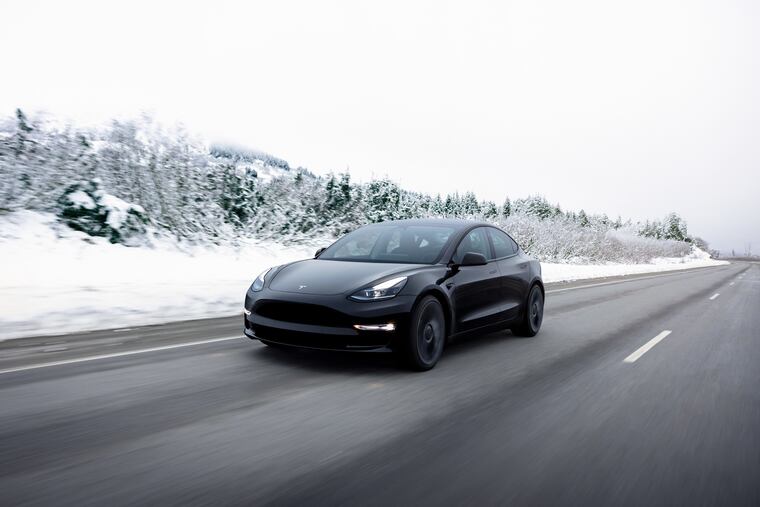Tesla ‘phantom braking’ issue is focus of federal safety probe after owners bombard government website with complaints
Tesla owners flooded NHTSA's website with hundreds of complaints of alleged "phantom braking" this month following a Washington Post report that noted a sharp uptick in the phenomenon

SAN FRANCISCO — The National Highway Traffic Safety Administration is probing sudden unexpected braking in Tesla vehicles, the latest safety probe faced by the electric vehicle maker.
The agency said it had received 354 complaints about the issue in nine months, in two models across multiple model years: the 2021 and 2022 Tesla Model 3 and Model Y. NHTSA said the preliminary evaluation will affect about 416,000 vehicles.
“The complaints allege that while utilizing the [advanced driver-assistance] features including adaptive cruise control, the vehicle unexpectedly applies its brakes while driving at highway speeds,” the agency said.
» READ MORE: Tesla recalls 54,000 vehicles because ‘Full Self-Driving’ software rolls through stop signs
Tesla owners flooded NHTSA’s website with hundreds of complaints of alleged “phantom braking” this month following a Washington Post report that noted a sharp uptick in the phenomenon. The issue, a glitch in the cars’ forward collision warning and automatic emergency braking systems, occurs when Tesla’s cars suddenly slow down in response to falsely detected hazards.
Owners began complaining of the issue in larger numbers beginning in November, days after the automaker issued a recall of its "Full Self-Driving" software over a glitch that could lead to phantom braking. More broadly, the surge has followed Tesla's shift from a multi-sensor perception system combining cameras and radar to a camera-based system that relies on what the automaker calls "Tesla Vision." The spate of complaints included several common patterns as well as at least one report of an injury.
After the Post’s article in early February, NHTSA received about 250 complaints about phantom braking during the following two weeks. That compared with 107 complaints in the previous three months and only 34 in the preceding 22 months.
Tesla, which disbanded its public relations department in 2020, did not respond to requests for comment.
Tesla CEO Elon Musk has repeatedly defended the use of its automated features, calling its Autopilot driver-assistance “unequivocally safer” than normal driving and decrying the “fun police” as the company faced multiple recalls in recent weeks — an apparent reference to federal regulators.
Complaints of phantom braking involving Tesla vehicles also far surpass those for other automakers that also have advanced driver assistance but largely rely on radar-equipped systems. Also, among all the complaints, about a third of the sudden slowdowns occurred on two-lane roads or highways when, for example, an oncoming truck was approaching in the distance, according to a Post analysis.
“It’s when the traffic is coming toward me that it randomly throws on the brake,” said Sally Bergquist, of Alexander City, Ala., who had repeated sudden slowdowns on her 2021 Tesla Model S on drives to Birmingham.
The NHTSA doesn’t verify complaints — owners describe the issue they experience, and provide their vehicle identification number along with other identifying information.
But the sheer number of complaints for Teslas related to phantom braking far outpaced those for other vehicle makes and models.
The agency is investigating the potential role of Autopilot in about a dozen crashes involving Teslas and parked emergency vehicles while the driver-assistance system was active. Tesla has issued a steady stream of recalls since October, when the NHTSA publicly called out the company for its failure to issue a formal recall when it updated its cars to better detect emergency vehicles in low light.
Experts in vehicle perception systems say that a reliance on cameras to navigate roads can sometimes be problematic, since it can be more easily confused than radar about factors such as distance or an upcoming billboard.
Marlin Myers, 52, of Mechanicsburg, Pa., said repeated phantom braking forced him to stop using cruise control altogether on his Tesla Model Y during his monthly drives to Philadelphia on Interstate 76.
It’s happened roughly eight times since June 2021, lurching his car from around 70 mph to 40 mph, with no visible hazard in the vicinity.